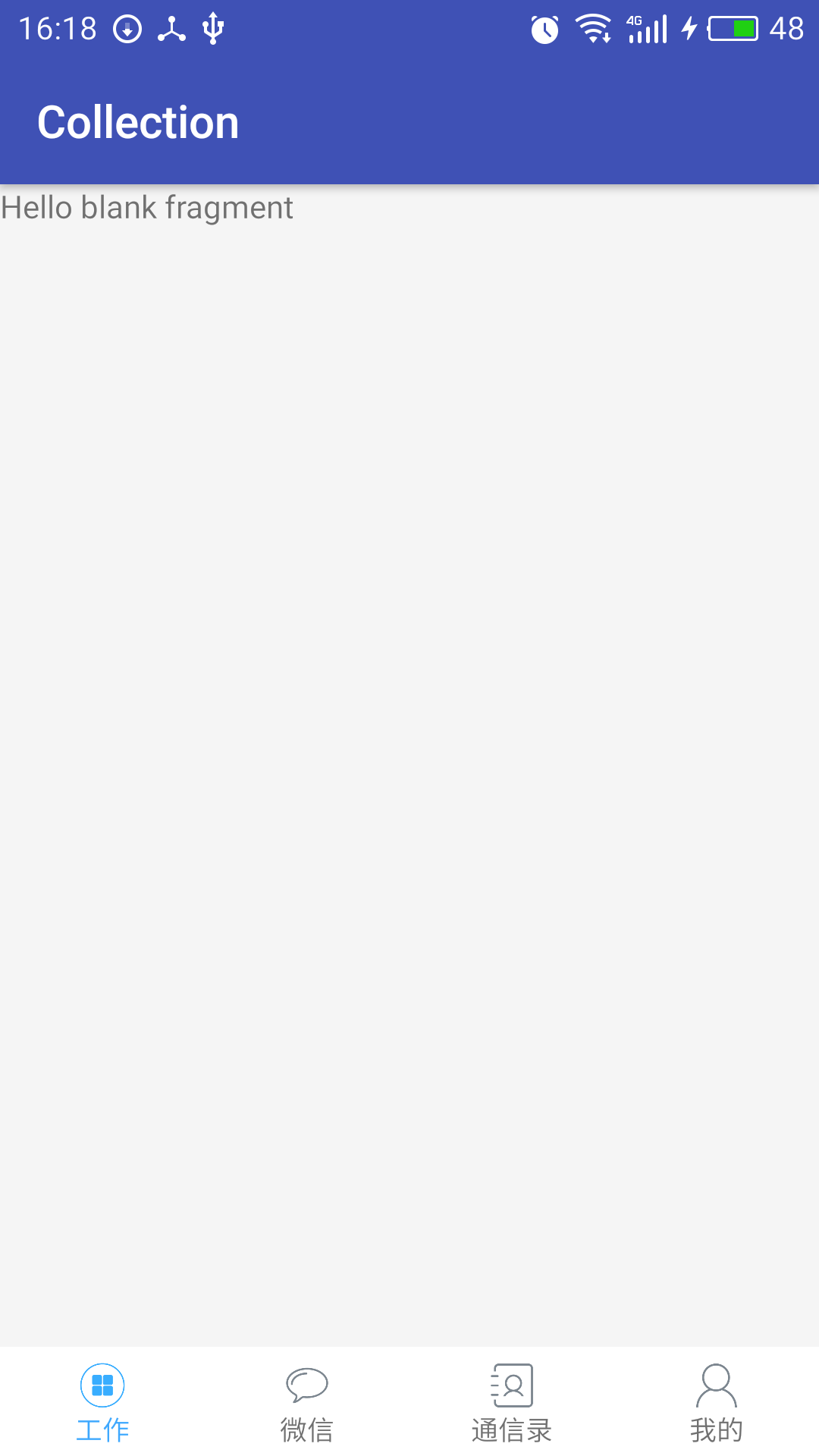实现底部导航栏
Posted
tags:
篇首语:本文由小常识网(cha138.com)小编为大家整理,主要介绍了实现底部导航栏相关的知识,希望对你有一定的参考价值。
许多的App都使用底部导航栏来实现导航功能,我们可以使用RadioGroup+RadioButton的形式或者直接Button数组的方式实现,而谷歌官方提供了FragmentTabHost来方便快捷实现底部导航栏。
android.support.v4.app.FragmentTabHost
主要代码:
fragmentTabHost.setup(this, getSupportFragmentManager(), R.id.layout_content);
for (int i = 0; i < TAB_NUM; i++){
TabHost.TabSpec tabSpec = fragmentTabHost.newTabSpec(mTitles[i]);
tabSpec.setIndicator(getTabView(i));
fragmentTabHost.addTab(tabSpec, mFragments[i], null);
}布局文件:
<LinearLayout xmlns:android="http://schemas.android.com/apk/res/android" xmlns:tools="http://schemas.android.com/tools" android:id="@+id/activity_fragment_tab_host" android:orientation="vertical" android:layout_width="match_parent" android:layout_height="match_parent" tools:context="com.cheng.collection.ui.FragmentTabHostActivity"> <FrameLayout android:id="@+id/layout_content" android:layout_width="match_parent" android:layout_height="0dp" android:layout_weight="1"> </FrameLayout> <android.support.v4.app.FragmentTabHost android:id="@+id/tabhost" android:layout_width="match_parent" android:layout_height="48dp"> </android.support.v4.app.FragmentTabHost> </LinearLayout>
实现代码:
public class FragmentTabHostActivity extends AppCompatActivity {
private static final int TAB_NUM = 4;
private Class[] mFragments = new Class[]{//tab对应的Fragment
AFragment.class,
BFragment.class,
CFragment.class,
DFragment.class
};
private int[] mTabDrawables = new int[]{//tab图片
R.drawable.tab_work,
R.drawable.tab_im,
R.drawable.tab_ebook,
R.drawable.tab_me,
};
private String[] mTitles = new String[]{//tab标题文字
"工作",
"微信",
"通信录",
"我的"
};
@Override
protected void onCreate(Bundle savedInstanceState) {
super.onCreate(savedInstanceState);
setContentView(R.layout.activity_fragment_tab_host);
FragmentTabHost fragmentTabHost = (FragmentTabHost) findViewById(R.id.tabhost);
fragmentTabHost.setup(this, getSupportFragmentManager(), R.id.layout_content);
for (int i = 0; i < TAB_NUM; i++){
TabHost.TabSpec tabSpec = fragmentTabHost.newTabSpec(mTitles[i]);
tabSpec.setIndicator(getTabView(i));
fragmentTabHost.addTab(tabSpec, mFragments[i], null);
}
}
private View getTabView(int index) {
View view = View.inflate(this, R.layout.tab_indicator, null);
ImageView iv = (ImageView) view.findViewById(R.id.maintab_iv);
TextView tv = (TextView) view.findViewById(R.id.maintab_tv);
iv.setImageDrawable(getDrawable(mTabDrawables[index]));
tv.setText(mTitles[index]);
return view;
}
}备注:
这个实现方式有一个弊端,就是每次切换tab都会重新加载Fragment。实际项目过程种可能并不需要,而是需要在切换过程中保留Fragment状态。
原因:
FragmentTabHost在切换tab的时候使用detach和attach的方法来显示/隐藏Fragment。
解决方法:
修改FragmentTabHost的源代码将doTabChanged方法中的
ft.detach(mLastTab.fragment); 改成 ft.hide(mLastTab.fragment);
ft.attach(newTab.fragment); 改成 ft.show(newTab.fragment);
本文出自 “一剑围城” 博客,请务必保留此出处http://weijiancheng.blog.51cto.com/10190955/1896085
以上是关于实现底部导航栏的主要内容,如果未能解决你的问题,请参考以下文章
